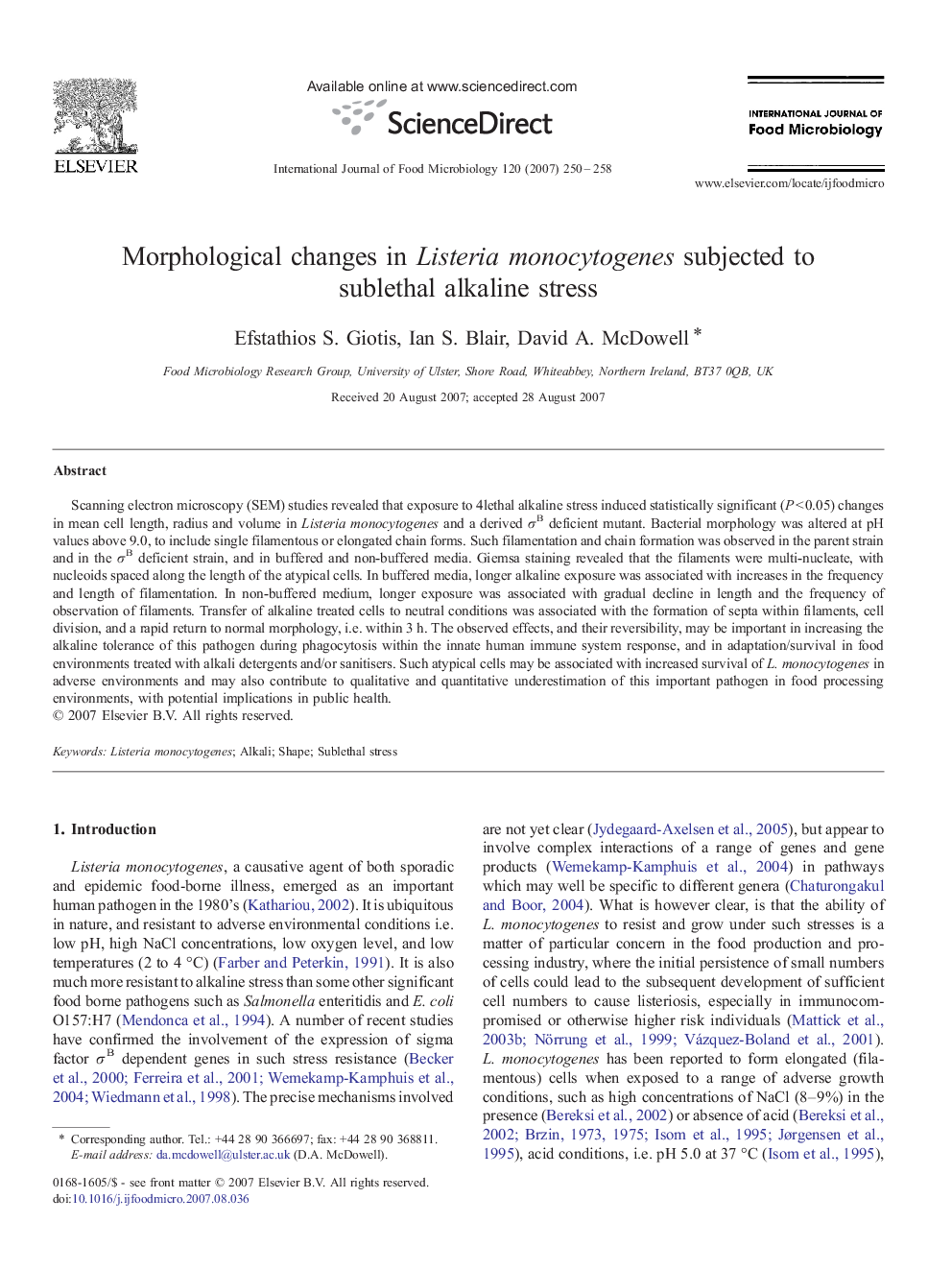| Article ID | Journal | Published Year | Pages | File Type |
|---|---|---|---|---|
| 4369602 | International Journal of Food Microbiology | 2007 | 9 Pages |
Scanning electron microscopy (SEM) studies revealed that exposure to 4lethal alkaline stress induced statistically significant (P < 0.05) changes in mean cell length, radius and volume in Listeria monocytogenes and a derived σB deficient mutant. Bacterial morphology was altered at pH values above 9.0, to include single filamentous or elongated chain forms. Such filamentation and chain formation was observed in the parent strain and in the σB deficient strain, and in buffered and non-buffered media. Giemsa staining revealed that the filaments were multi-nucleate, with nucleoids spaced along the length of the atypical cells. In buffered media, longer alkaline exposure was associated with increases in the frequency and length of filamentation. In non-buffered medium, longer exposure was associated with gradual decline in length and the frequency of observation of filaments. Transfer of alkaline treated cells to neutral conditions was associated with the formation of septa within filaments, cell division, and a rapid return to normal morphology, i.e. within 3 h. The observed effects, and their reversibility, may be important in increasing the alkaline tolerance of this pathogen during phagocytosis within the innate human immune system response, and in adaptation/survival in food environments treated with alkali detergents and/or sanitisers. Such atypical cells may be associated with increased survival of L. monocytogenes in adverse environments and may also contribute to qualitative and quantitative underestimation of this important pathogen in food processing environments, with potential implications in public health.
